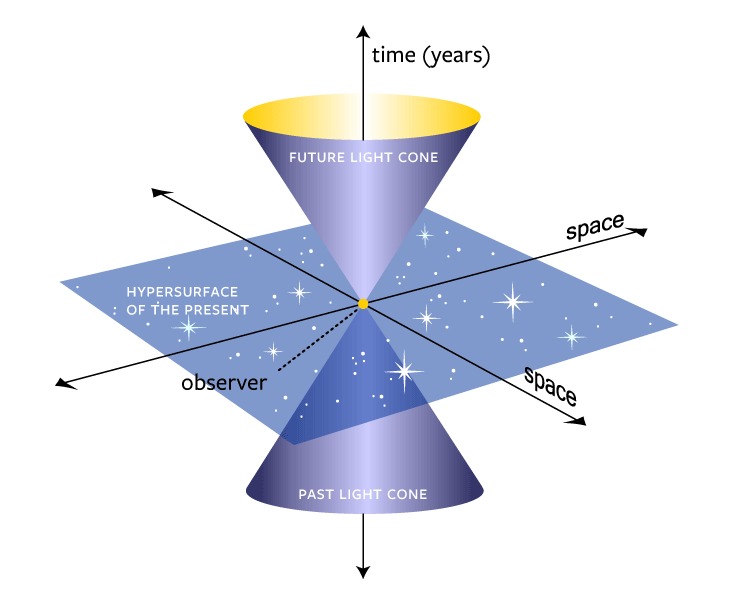Understanding Identity through Quantum Mechanics: A Deep Dive
Written on
In the realm of quantum mechanics, identity is put under scrutiny, raising profound questions about what it means to be an individual.

In a famous historical case, Martin Guerre, a man from a small village in France, vanished after being accused of theft. Eight years later, he returned, but doubts about his identity arose when a soldier claimed he was an imposter. This story has been retold in various forms, highlighting our insecurities regarding identity. How can we be certain of who we are or who others are in a world that is constantly changing?
Historically, vitalist philosophers suggested that our souls define us, while modern science seeks to ground identity in the physical body. However, this quest leads to complications. When examining the very particles that make up a person, like electrons, one might wonder: what if we were to question the identity of the electron itself?

The absurdity of trying an electron in a courtroom might provoke laughter, but the reality is that electrons are indistinguishable. Each electron is defined solely by its mass, charge, and spin; they possess no unique features to differentiate them from one another. This raises the question: what does it mean to have identity in such a context?
In quantum mechanics, two identical particles cannot be treated as separate entities. For example, if we have two indistinguishable particles, the possibilities for their configurations change dramatically compared to distinguishable ones. Experiments affirm that these particles behave according to rules of probability that reflect their indistinguishable nature.
To illustrate this, the defense in our hypothetical trial calls upon theoretical physicist Frank Wilczek, who emphasizes the profound finding in quantum field theory that two electrons are fundamentally indistinguishable. Interference patterns reveal the hidden behaviors of these particles, which can act as both particles and waves depending on observation.
As Wilczek notes, the indistinguishability of electrons is essential to the functioning of chemistry and the stability of matter. If electrons were distinct, the universe would descend into chaos. Their identical nature means that while we can refer to them collectively, we cannot ascribe individual identities.
Peter Pesic, a physicist and historian, elaborates on this by stating that while we can count electrons, we cannot order them. This distinction between cardinal and ordinal numbers further illustrates that, at a fundamental level, particles like electrons do not possess individual identities.
The prosecutor in our courtroom scenario challenges this idea, suggesting that location might differentiate electrons. Wilczek counters that while particles appear to occupy specific locations, their true nature is not confined to any particular point in space.
In quantum mechanics, particles are described not as isolated objects but as part of a complex web of relationships, with entangled particles sharing identities that defy conventional notions of space and individuality. Philosophers like James Ladyman argue that space is not a backdrop but a construct emerging from the interactions of these particles.
This investigation into identity extends to human beings. While electrons may lack individual essence, humans experience a sense of identity through the complex organization of indistinguishable components. Our identities emerge not from the materials that constitute us but from the patterns formed by these materials.
As we consider the implications of quantum mechanics on identity, we confront a startling conclusion: reality may not consist of distinct objects but rather of patterns and relationships. The electron, in its elusive nature, raises a poignant question about the essence of being and existence.
In the case of Martin Guerre, the trial ultimately led to a tragic conclusion, revealing that identity is a nuanced and complex interplay of memory, perception, and continuity. The real Martin Guerre's identity was tied to his life's trajectory, while the imposter's claim faltered under scrutiny.

As we explore the concept of identity, we find that it is less about individual components and more about the interactions that define us. The electrons that constitute our being may not possess individuality, but they collectively contribute to our identity as a complex system.
In summary, our understanding of identity may not reside in the physical components that make us who we are but rather in the intricate patterns and relationships that emerge from them. Just as the electrons that build our bodies exist in a state of flux, so too does our identity, leading us to reconsider what it means to truly exist.
For further reading: - Ladyman, J. & Ross, D. Every Thing Must Go: Metaphysics Naturalized Oxford University Press, Oxford, U.K. (2007). - Pesic, P. Seeing Double: Shared Identities in Physics, Philosophy and Literature MIT Press, Cambridge, MA (2002). - Wilczek, F. & Devine, B. Longing for the Harmonies: Themes and Variations from Modern Physics W.W. Norton & Co., New York, NY (1987).
Amanda Gefter is a physics writer and author of *Trespassing on Einstein’s Lawn: A father, a daughter, the meaning of nothing and the beginning of everything. She lives in Cambridge, Massachusetts.*